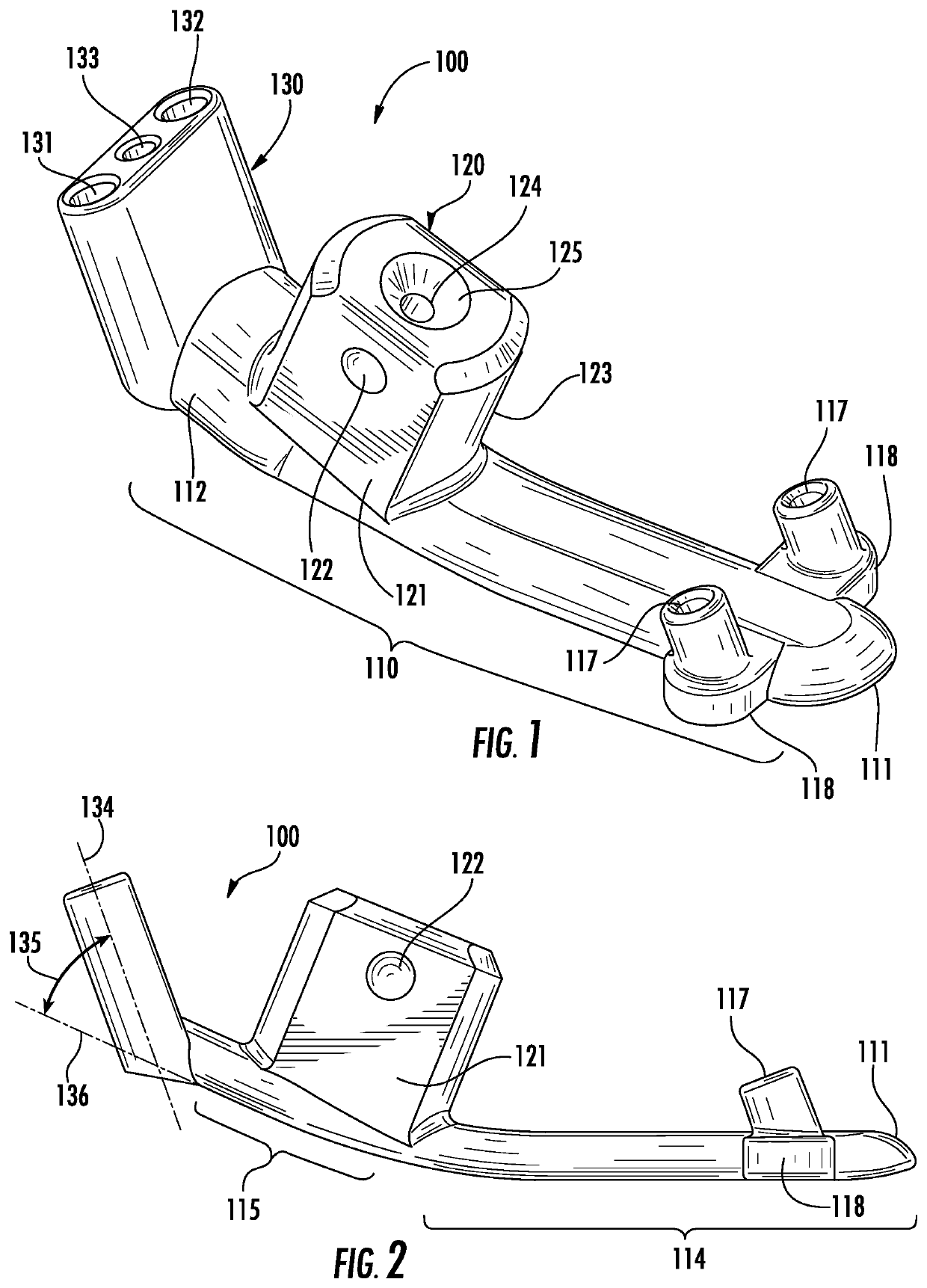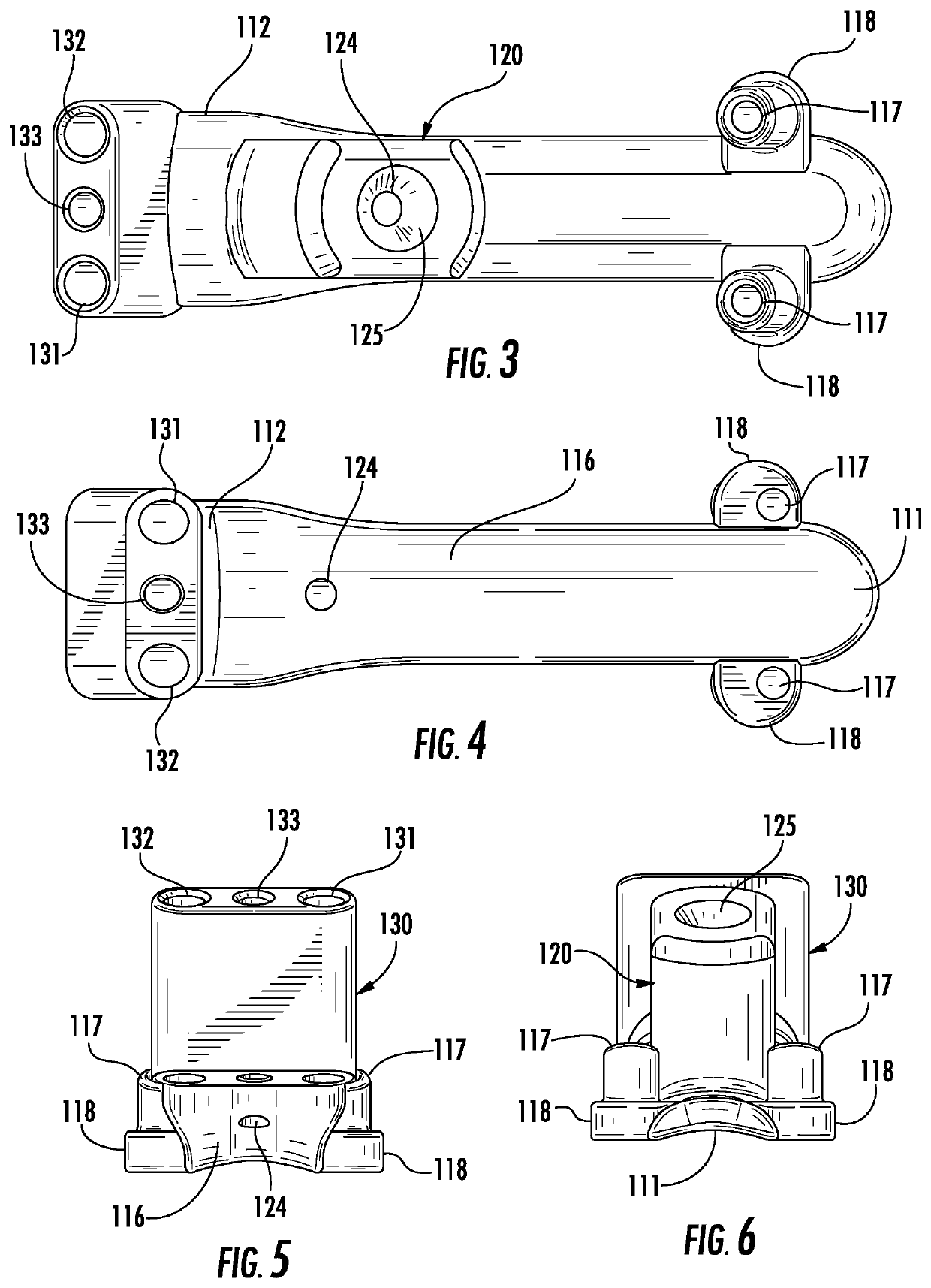Drill guides and inserters for bone plates having hook members
a technology of bone plate and inserter, which is applied in the field of fixing bone fractures, can solve the problems of inability to place screws through both cortices, inability to drill through the cortices, and inability to provide adequate space for more than one or two screws to be placed, so as to facilitate the drilling of at least, facilitate the drilling of locking pegs, and enhance the effect of subchondral fixation
- Summary
- Abstract
- Description
- Claims
- Application Information
AI Technical Summary
Benefits of technology
Problems solved by technology
Method used
Image
Examples
Embodiment Construction
[0035]While several different embodiments of certain components of the present invention are described herein and shown in the various figures, the use of the prime symbol in conjunction with common reference numerals in the figures denote similar or analogous elements or structure to those of a previously described embodiment.
[0036]A four-hole, neutral offset bone plate 220, configured for volar application in conjunction with fractures of the distal radius and for which the drill guide and inserter / impactor of FIGS. 1-11 of the present invention may be employed for placement and affixation, is shown in FIGS. 12A and 12B as comprising elongated body 221, having a first end 222 proximate first hook member, or intra-osseous tine 224 and second hook member, or intra-osseous tine 225. Elongated body 221 includes a first region 228 proximate first end 222, a second region 226 proximate a second end 223, and an intermediate, angled, or “flared” region disposed between first region 228 an...
PUM
 Login to View More
Login to View More Abstract
Description
Claims
Application Information
 Login to View More
Login to View More - R&D
- Intellectual Property
- Life Sciences
- Materials
- Tech Scout
- Unparalleled Data Quality
- Higher Quality Content
- 60% Fewer Hallucinations
Browse by: Latest US Patents, China's latest patents, Technical Efficacy Thesaurus, Application Domain, Technology Topic, Popular Technical Reports.
© 2025 PatSnap. All rights reserved.Legal|Privacy policy|Modern Slavery Act Transparency Statement|Sitemap|About US| Contact US: help@patsnap.com



